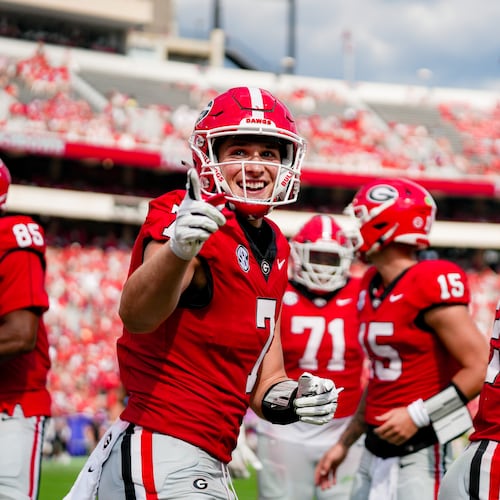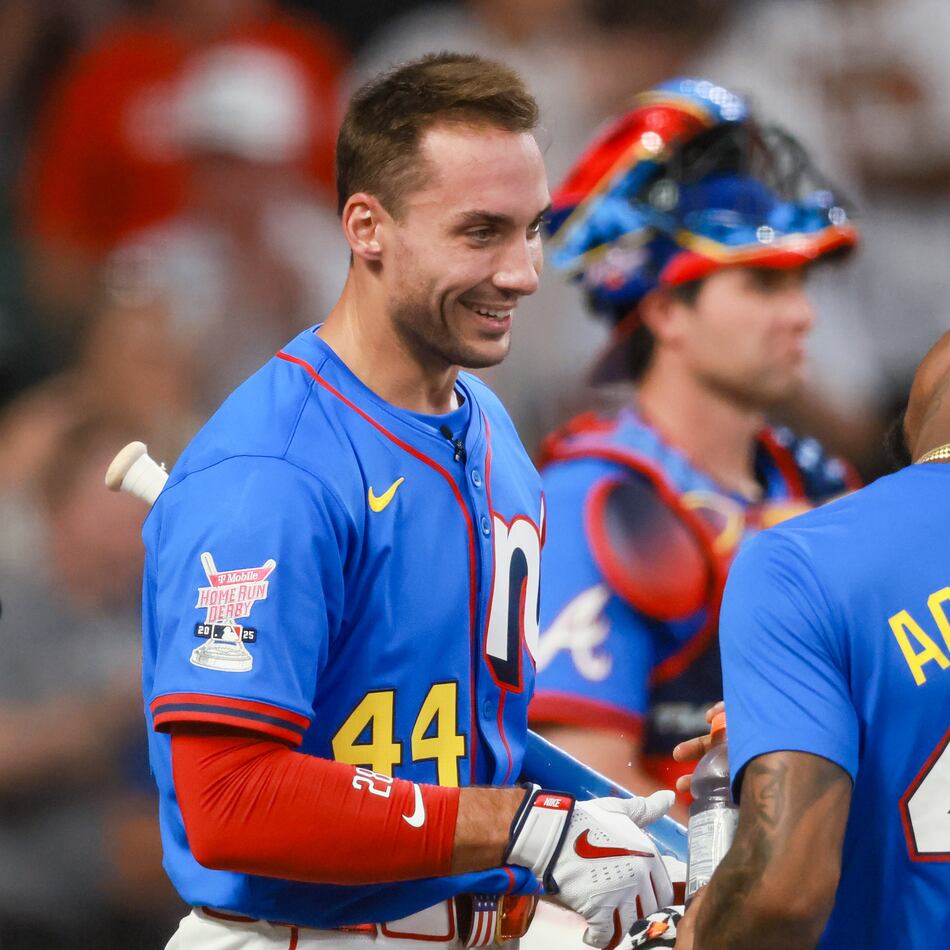CJ Allen said Georgia coaches haven’t yet talked to players about any of the rule changes for the coming season. So, the junior linebacker was surprised to hear about one that will have a big impact on Georgia’s defense.
Defenders no longer will be able to make what SEC coordinator of officials John McDaid said are “abrupt, coordinated” movements before the snap that are meant to simulate it. The penalty is delay of game on the defense. McDaid said the new rule is designed to reduce the number of false-start penalties.
It probably will accomplish that. The rule also will take away a major tool used by Georgia’s defensive front. “Stemming,” as the strategy is called, is designed to confuse offensive linemen about their blocking responsibilities before the ball is snapped.
“Oh, man, we definitely ‘stem’ a lot,” Allen said. “So, I guess that is just something we’ll have to talk a lot about on the defensive side of the ball, for sure.”
I’m not sure if those talks will add much clarity. Georgia coach Kirby Smart highlighted one of the obvious issues with the new rule.
“You would need to define ‘abrupt’ for me because we could talk for hours about what’s abrupt and what’s not,” Smart said. “Was that movement abrupt or was that slow, you sitting down? You’ve got to define abrupt. (McDaid) has got to define abrupt, and he’s got to teach his (officials) that go out on the field, and I think they do a tremendous job of tape study and how to go about that.
“It’s one of those things that is very intricate among football and in football minds, and people try to manipulate and do things and change things.”
The rule change opens more room for manipulation.
Defenders will try to figure out how to “stem” without violating the nebulous delay-of-game rule. Offensive linemen will jump offside to draw a delay-of-game penalty when they see the defense move. Game officials will have to sort it all out.
Credit: arvin.temkar@ajc.com
Credit: arvin.temkar@ajc.com
Good luck with that. How are officials to decide which movements are abrupt and which are … leisurely, I guess? How can they judge when movements are coordinated? How can they tell when the movements are meant to simulate the snap?
If Bulldogs defenders still want to “stem,” then they are going to have to figure out how to do so while staying on the right side of the new rule. In addition to the strategic advantages of making it harder for offensive linemen to know who to block, the pre-snap movement of UGA defenders often caused opponents to commit false-start penalties. It was a factor in UGA’s two biggest victories of 2024, both against Texas.
McDaid said the rule change is meant to reduce those kinds of plays.
“There is a lot of what I’ll call ‘abrupt, coordinated movement’ by the defense (before the snap),” he said. “What we’ve seen is over the last four or five years, the number of false starts per game has gone up, and I attribute it to what the defense is doing on that side of the ball. It’s just not what I see in the Southeastern Conference, it’s what my peers and I have all been seeing across the nation.”
Fewer false starts would be good for the game. But it seems that college football officials saw defenses gain an edge and now want to eliminate it. The NFL also frequently makes rule changes that favor the offense. People want to see points scored but, at some point, they become cheap points if defenders are constrained by unfair rules.
This new college football rule essentially penalizes defenders for their opponents’ mistakes. McDaid said calling delay of game on the defense for simulating a snap simply will hold the defense to the same standard as the offense. That doesn’t make sense because defenders can’t simulate the snap with their movements.
The offense controls the snap. It makes sense to have rules that prohibit offensive players from simulating it with their movements. Defenders can’t cross the line of scrimmage until the ball is snapped.
There’s already a rule against defenders calling out signals to confuse offensive players. Now there will be a rule prohibiting defenders from trying to confuse blockers. False starts that would happen less if those blockers played with more discipline.
Now, game officials essentially will need to read the minds of defensive players to determine if they’re trying to simulate the snap. They’ll have to decide which movements are “abrupt” and “coordinated.” The difficulty of those judgments was illustrated by a video clip McDaid showed as an example of pre-snap movement by defenders that now won’t be allowed.
In the clip, two defenders lined up across from offensive linemen “stem” by suddenly moving from right to left before the snap. The moves looked coordinated and abrupt to me, so I figured McDaid would say they are no longer allowed. But he said those moves are still legal.
The problem was a defensive lineman on the opposite side who flinched “in concert with” his teammates.
“He’s simulating action at the snap, and it works,” McDaid said. “It makes the right guard move here. This is action that has now been written into the rules, codified that it’s illegal, (and) it’s what we call delay of game, defense.”
It didn’t look like the lineman was simulating the snap to me. His movements also didn’t appear to be abrupt, as I would define it. And even if that player was trying to simulate the snap by moving, so what? Offensive players know when the ball will be snapped, so they shouldn’t react.
I foresee this new rule causing a lot of confusion and outrage from players, coaches, fans and commentators. That’s to be expected. A bigger potential issue is that “stemming” teams like the Bulldogs will have to abandon an effective strategy because of a new, confusing rule that lets offensive players off the hook for their mental errors.
About the Author
Keep Reading
The Latest
Featured


